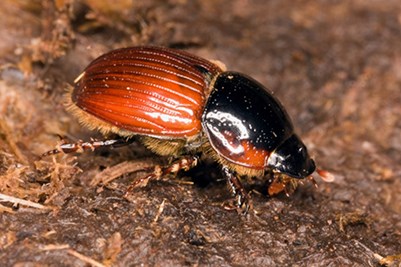Poo Picking for Parasites but what about the Dung Beetles?

 To poo pick for parasite infection or to preserve habitat for dung beetles, it’s a tricky conundrum! The two can seem counter intuitive at the outset. On one hand poo picking is the best way to break the lifecycle of parasites on the pasture without having to rely on chemicals. But fresh dung is also essential for our dung beetles, little critters who could play an important role in managing animal waste naturally, negating the need for all that heavy labour and giving a host of added benefits to the land, if we let them.
To poo pick for parasite infection or to preserve habitat for dung beetles, it’s a tricky conundrum! The two can seem counter intuitive at the outset. On one hand poo picking is the best way to break the lifecycle of parasites on the pasture without having to rely on chemicals. But fresh dung is also essential for our dung beetles, little critters who could play an important role in managing animal waste naturally, negating the need for all that heavy labour and giving a host of added benefits to the land, if we let them.
So how do we get the balance right?
Horse health and the environment are both equally important considerations.
- Start by making sure your parasite control programme is working. A regular testing programme will identify any problems in the herd and allow any wormy individuals to be treated accordingly. Avoiding blanket treatments means there is always some non-toxic dung available to dung beetles. You may need to worm more often and poo pick with greater frequency in the beginning to reduce infection levels.
- Worm eggs laid in dung hatch within 4-5 days. Research therefore suggests that poo picking twice a week is sufficient to significantly reduce infective larvae on the pasture. Meanwhile dung beetles prefer fresh dung up to 48hrs old. Start by leaving the freshest piles on the pasture and clearing them after three days.
- Be aware of which chemical you’re using and which parasite you’re treating for. Where you do need to give a wormer, consider stabling horses for 48-72 hrs afterwards or at least restrict to smaller paddocks that can be easily and more regularly poo picked. This is both to limit exposure to chemical toxins for dung beetles and to reduce incidences of reinfection particularly of tapeworm for the horse.
Of our five licenced wormers for horses, ivermectin is the most toxic to dung beetles and moxidectin moderately toxic while pyrantel, fenbendazole and praziquantel are thought not to affect dung beetles. When treating for tapeworm, either with praziquantel or pyrantel (at double dose) this causes packets of tapeworm eggs to be released into the dung increasing the infection levels on pasture in the first few hours after treatment. - If you can, worm when dung beetles are less active – during winter months.
- Like all conservation projects, dung beetle populations will take time to recover and be greatly influenced by the surroundings outside your fields too. But take heart, there are many benefits to making the effort and some dung beetle species will fly in from up to 10 miles away for the right poo!
Benefits of cultivating your dung beetle population
Horses can produce around 3-5% of their body weight in dung every day. For an average 16hh horse that’s around 18kg of dung a day or 6.5 tons every year! If we spend half an hour poo-picking every day, that is over 182 hours a year on removing dung from our pastures!
Find out more: